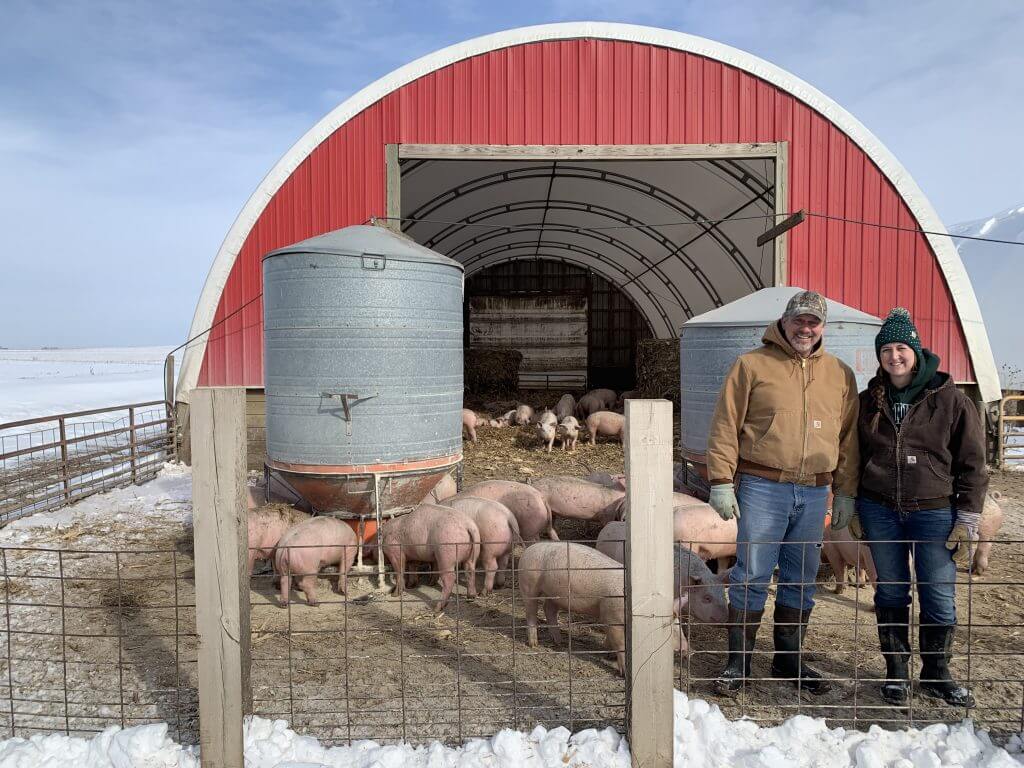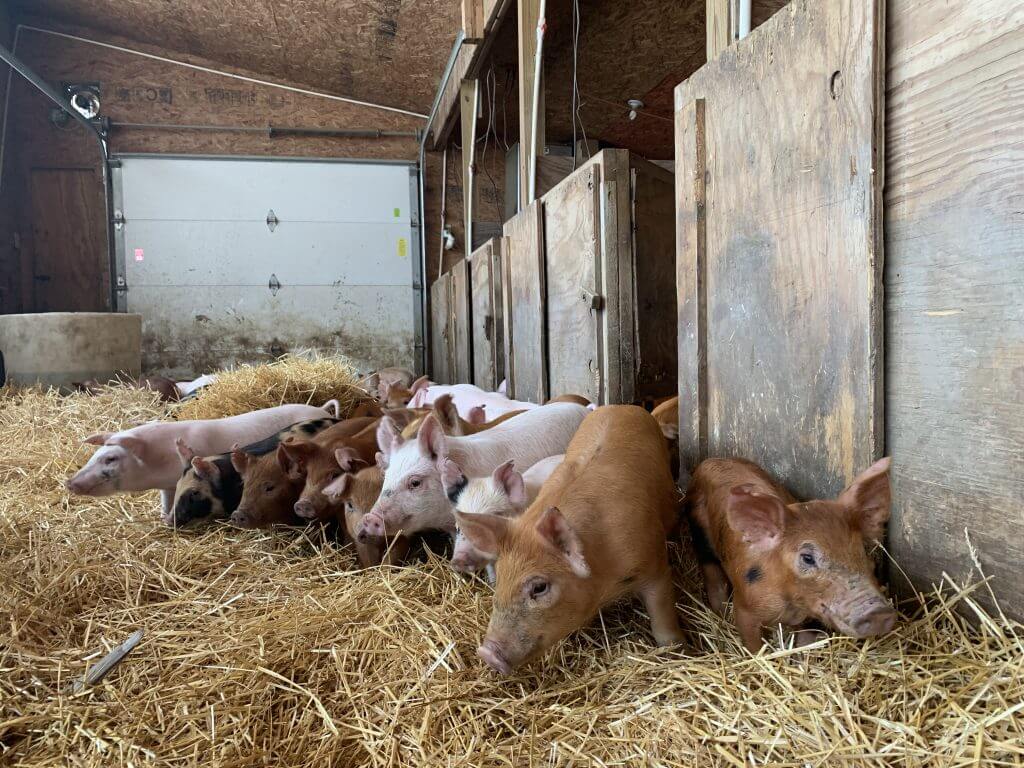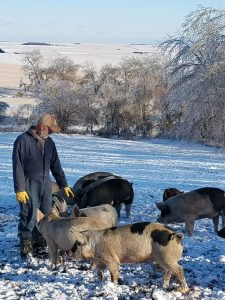Keeping Pigs Warm in Cold Weather: The Niman Ranch Way
January 4, 2021Call it sweater weather, call it hot chocolate season or call it just plain old winter, but it is here and it is cold. It comes every year usually about the same time, and yet as a Niman Ranch farmer the winter season always sneaks up on me.
By Ron Mardesen, 20-year farmer with Niman Ranch, based out of Elliott, Iowa
 What does it take to get ready for winter on the farm? Pretty much the same as winterizing your house.
What does it take to get ready for winter on the farm? Pretty much the same as winterizing your house.
- Make sure nothing will freeze, like water pipes
- Make sure cold drafts can’t come creeping in around doors, windows or foundations
- And, of course, make sure you have enough blankets and emergency supplies for that occasional snow or ice storm
On the farm, that translates to checking outside drinking fountains for the hogs, sealing drafts in barns and securing extra bedding and feed, just in case. In addition to getting the farm ready for cold weather, Niman Ranch farmers select pig breeds that are well-suited to the outdoors, heartier breeds that carry more fat for insulation. This fat translates to extra flavor and is a reason why our bacon is a fan favorite.
Pigs are a Lot Like Kids
I have always believed caring for pigs in the colder months is a lot like sending a kindergartener to school. You make your best guess at what the weather will be like, dress the child accordingly and send them out the door. By late afternoon, you will know if your guess was right depending on what the child did with the clothes you dressed them in. In some cases, maybe they left their coat at school!
With pigs, you’re not sending them to school, but you are doing your best to guess what the weather will do. You add bedding (a warm matt of insulation to their bed) or not, open or close windows and make other tweaks to ensure the pigs are comfy.
Straw Bedding: The Secret to Cozy Pigs

I provide bedding for the pigs year-round—as do all Niman Ranch farmers, per our protocols. The pigs can root, burrow and play in the bedding and mom pigs use the bedding to build cozy nests when they are ready to give birth to their piglets. Watching pigs play in fresh bedding is a true delight. Some call it environmental enrichment. I call it good old fashion fun.
During the colder times of the year, bedding is all the more important. Just what exactly is considered bedding? For you and me it would be a nice warm wool blanket and booties. For the pigs it needs to be something with an insulating effect, it needs to be able to soak up moisture, like a paper towel and it need to be something the farmer can handle easily. Here’s more information on the three key aspects of bedding:
1. Provide Insulation
Some people are just naturally warm blooded and some people are just naturally cold blooded. Pigs are no different. The challenge is finding a temperature range that works for everybody. I’m always looking to reach the thermo-neutral zone.
The thermo-neutral zone, in layman’s terms, is a temperature range where a pig feels comfortable and doesn’t have to burn energy to keep itself warm. Pigs lying on their sides all stretched out are in their thermo-neutral zone. The challenge with reaching this zone is that it is constantly changing as the pig grows and gravitates to lower temperatures.
2. Absorb Moisture
Remember how I compared pigs to kindergarteners? Accidents will happen! No baby likes a soggy diaper and no pig likes a wet place to rest. Like disposable diapers today, bedding should be able to pull moisture away from the pigs to keep them dry and comfortable.
An added benefit to deep bedding is that when it gets soiled by the pigs, the farmer applies clean bedding on top. This starts a composting process which generates heat, like an electric blanket for the pigs!
3. Easy for the Farmer to Handle
What we use to keep pigs warm must be easy for me, the farmer, to handle. The bedding should be easy to carry into and out of a building. The bedding should also be something the pig can root in or burrow down into for warmth and insulation.
Take a Lesson from the Three Little Pigs
 In the upper Midwest where I live, we have three choices for bedding: corn stalks, wheat straw and oat straw. All three are from the grass family and are very absorbent. Corn stalks are what is left in the fields after the crop has been harvested. Corn stalks are larger and courser than the other two options and work well for bigger pigs.
In the upper Midwest where I live, we have three choices for bedding: corn stalks, wheat straw and oat straw. All three are from the grass family and are very absorbent. Corn stalks are what is left in the fields after the crop has been harvested. Corn stalks are larger and courser than the other two options and work well for bigger pigs.
Wheat and oat straw are the stems from wheat and oat plants left in the field after the grain have been harvested. They have finer stems than corn stalks and work well for younger pigs.
We all remember The Three Little Pigs and the Big Bad Wolf, right? In the story, a house built out of straw is not structurally sound, a house built out of sticks is a little better but a house built out of brick is best. Think in reverse for keeping pigs warm: straw is best.
Just like a parent dressing a child for school, caring for pigs and their needs change on a day to day basis. Some days we get it right in the morning, and some days we have to readjust in the afternoon.
It’s that time of year folks. Days are shorter, nights are colder and Old Man Winter is here. Stay warm!
